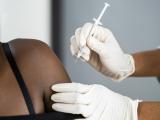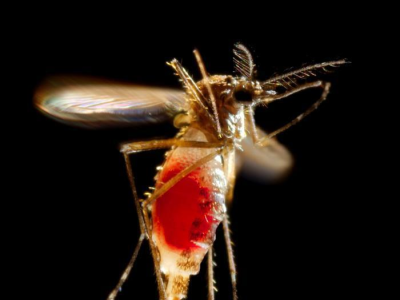Nov 8, 2002 (CIDRAP News) The Pentagon's mandatory anthrax shots caused adverse reactions in most recipients and helped prompt many Air Force Reserve and Air National Guard members to transfer to other units or leave the military between 1998 and 2000, according to a survey by Congress's General Accounting Office (GAO).
The survey indicated that 85% of troops who received an anthrax shot had an adverse reaction, a rate far higher than the 30% claimed by the manufacturer in 2000, when the survey was conducted. Sixteen percent of the survey respondents had either left the military or changed their status, at least in part because of the vaccination program.
The program "appears to have adversely affected the Air National Guard and Air Force Reserve in terms of retaining needed experienced personnel," states the report, which was released in late October. The GAO recommended that the Department of Defense (DoD) set up an active surveillance program for vaccine reactions.
DoD launched a program in 1998 to inoculate all troops against anthrax. The program was cut back to a few select units in 2000 because of a vaccine shortage due to the manufacturer's difficulty in gaining Food and Drug Administration (FDA) approval for its operation after a plant renovation. In January 2002 the FDA finally approved the new production system. Last May, DoD announced it would step up the vaccination program again, but the shots would be required only for personnel deployed longer than 15 days in high-risk areas.
Although the survey was conducted in 2000, before the terrorist and anthrax attacks of September and October 2001 and before the FDA approval of the manufacturing changes, the GAO believes the findings "are still valid and useful" as a measure of the vaccination program's performance, the report says.
The survey was directed at a random sample of 1,253 guard and reserve personnel, chosen to represent all pilots and aircrew members, including vaccinated and unvaccinated personnel. The survey drew a 67% response rate; the percentage findings are said to be accurate within plus or minus 5 points.
The survey showed that between September 1998 and September 2000, "about 16 percent of the pilots and aircrew members of the guard and reserve had (1) transferred to another unit (primarily to nonflying positions to avoid or delay receiving the anthrax shots), (2) moved to inactive status, or (3) left the military," the report says. "Additionally, an estimated one in five (18 percent) of those still participating in or assigned to a unit in 2000that is those who had not already changed their statusindicated their willingness to leave in the near future. Both groups, those who had already left and those indicating their intention to leave, ranked AVIP [Anthrax Vaccine Immunization Program] as a key factor in their decision to leave or change their participation."
From the survey results, the GAO estimated that 37% of aircrew personnel had received at least one anthrax shot (of the six-dose regimen) by September 2000. Eighty-five percent of the vaccinees reported an adverse reaction, and each shot triggered an average of four or more reactions. Almost a fifth of the reactions were classified as systemic, and a fifth of these lasted more than a week. At the time of the survey, the vaccine product insert listed the rate of adverse reactions at about 30% and the rate of systemic reactions at 0.2%, the report says.
"Such marked variances from the product insert data suggest the possibility of a change in the composition of the vaccine from the vaccine originally approved in 1970," the report says. It does not discuss whether newer vaccine from the renovated plant run by BioPort Corp. in Lansing, Mich., might be safer than vaccine made before the renovation.
The report notes that two short-term military studies of the vaccine's side effects, one in Korea and one in Hawaii, yielded results similar to the GAO's findings and showed that reactions were much more common in women than in men. Since 2000, the product insert has been revised to include the findings from these and other recent studies, the report says.
In other findings, the survey suggested that only about 40% of the aircrew personnel were satisfied with the information DoD provided about the vaccination program. The GAO estimated that 77% of the members would not have taken the vaccine if they had had a choice.
The report recommends that the Pentagon set up a program to actively monitor reactions to the vaccine. The Vaccine Adverse Event Reporting System (VAERS) is available to vaccinees, but it is a "passive" system relying on voluntary reporting. Many service members who had vaccine reactions did not report them to VAERS or their DoD healthcare providers, the report says.
DoD, when invited to comment on the draft GAO report, did not agree with the recommendation to establish an active surveillance program. The department cited a statement by the Institute of Medicine, in its March 2002 report on the vaccine, that special monitoring programs do not seem necessary despite the concerns of military personnel. But the GAO replied, in the report, that the IOM actually recommended that DoD use VAERS data to generate hypotheses for further study and also do "ad hoc unit-based population monitoring of reactions to all vaccines."
DoD also commented that the rates of pilot separations from the military were similar before and after the beginning of the anthrax vaccination program in 1998. Further, the Pentagon said the report did not compare aircrew turnover rates seen in the survey with the normal or expected rates.
But the GAO said military officials did not supply data to support the claim that pilot separation rates stayed the same after the vaccine program started. In addition, the survey dealt with all "changes of status," a broader category than separations, the report says. Although the separation rates may have been the same before and after the advent of the vaccine program, "it is clear that the losses among the most experienced pilots (in bases where AVIP was implemented) resulting from change of status were significant at some bases, resulting in the loss of an extremely seasoned workforce," the report concludes.
See also:
Full text of GAO report "Anthrax Vaccine: GAO's Survey of Guard and Reserve Pilots and Aircrew"
http://www.gao.gov/new.items/d02445.pdf


















